Experiences on HalfStack London 2018
Conference
- Experiences on CSSCamp and JSCamp 2019
- Experiences on WorkerConf 2019
- Experiences on typeof 2019
- Experiences on HalfStack London 2018
- Experiences on WebCamp Zagreb 2018
- Experiences on WebExpo 2018
- GraphQL Finland - Learn GraphQL Up North - Interview with Mikhail Novikov
- Experiences on Concat 2018
- Experiences on AgentConf 2018
- Experiences on ScriptConf 2018
- React Finland - Your Chance to Learn React Up North - Interview with Juho Vepsäläinen
I was invited to HalfStack London 2018 as a guest as we are considering bringing the conference series to Vienna. Therefore it was vital for me to get an idea of the format and how the event runs.
It was my second visit to London. Although the city is a little rugged, I like it, and it's easy to get along. It's famous for having a vibrant technology culture, and it showed positively at the conference.
Overview of HalfStack London 2018#
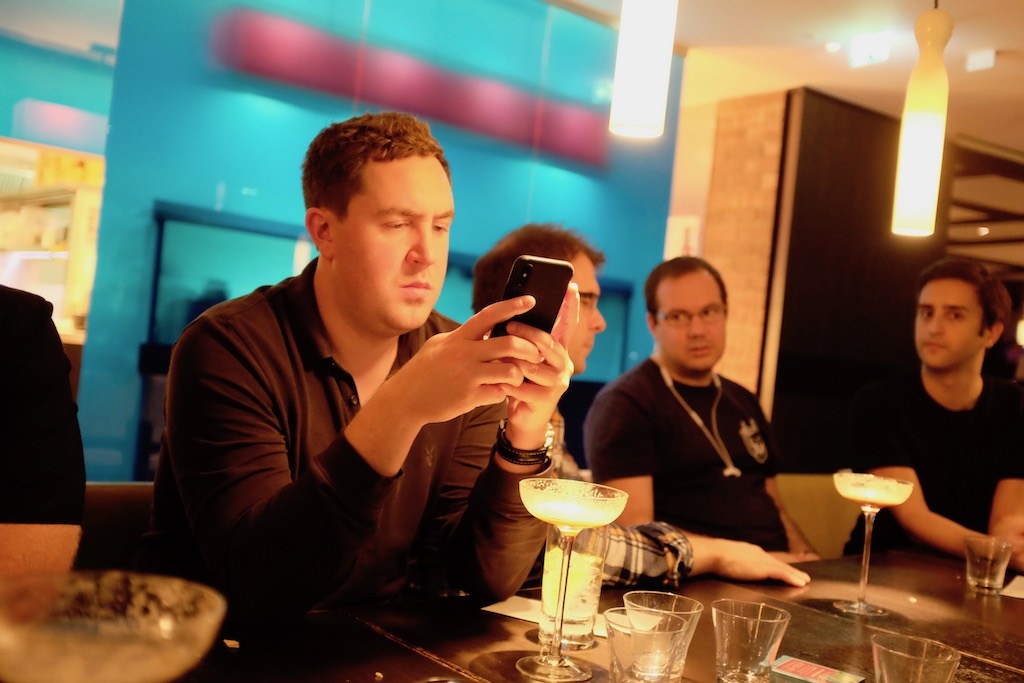
HalfStack is known for being a cozy conference that's held in a pub environment (a backroom of one) while being limited to one day and roughly 150 attendees. I like the single track format they chose, and I feel the schedule of the conference had been designed well.
The day started with an inspirational talk by Chris Heilmann, then went into technical topics, after which it changed gears into more fun talks and eventually the after party. The progression made sense to me as you tend to get more tired over the day. I might have preferred to have longer breaks and perhaps fewer speakers so this could be something we'll do differently in a Vienna edition.
The conference had a different feel than the others I've visited. It felt communal, and the fact that there were a quiz and other community-building events included mirrored this.
The venue was a little grungy in a pure London style. Some supports were obstructing the view, and the projector wasn't the best although it wasn't the worst one I've seen either. It might make sense to have a television in the back and mirror the slides there as now it was challenging to follow from there although the sofas provided in that section were nice. The venue also contained a bar from which food and drinks were served.
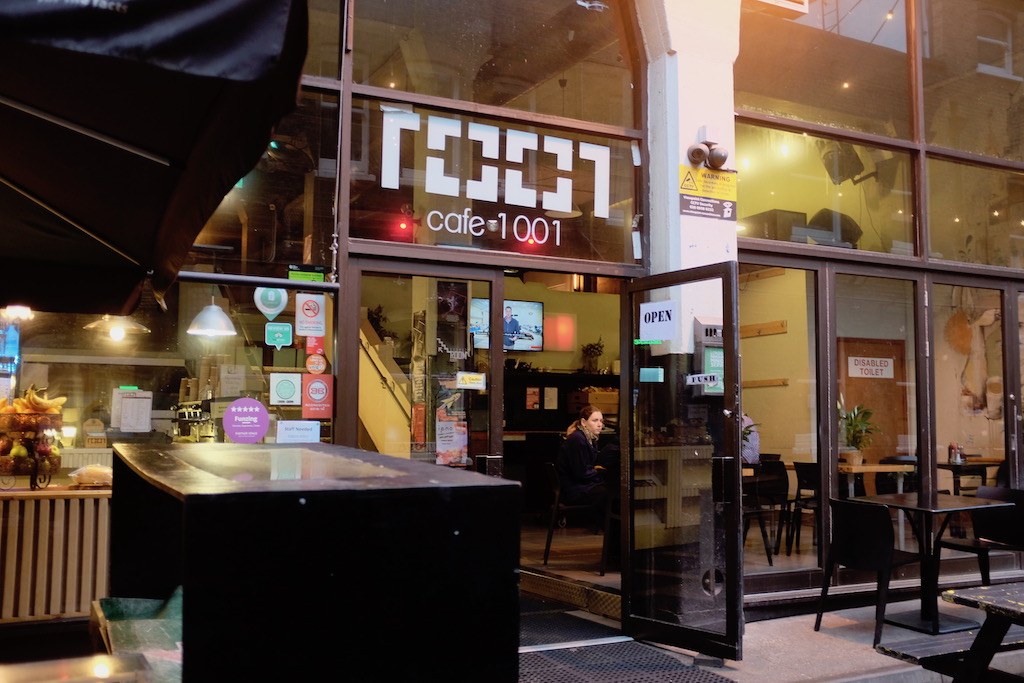
Bringing best practices front and centre - Chris Heilmann#
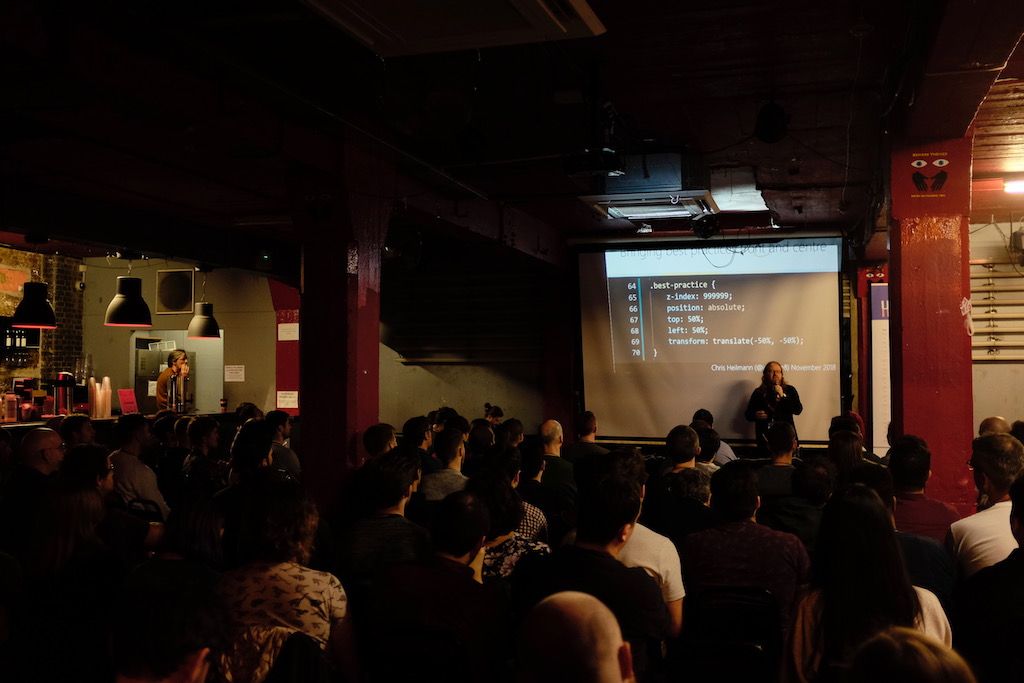
The conference started with a talk by Chris Heilmann. The key point I got out of the session is that we should push as much to tooling as possible. In particular, he mentioned webhint scanner that has been designed to support web development.
I agree with the sentiment, and this is why tools like Prettier gained traction as they allowed us to eliminate entire debates while enabling us to focus on what remains.
The present and future of VR on the Web - Ada Rose Cannon#
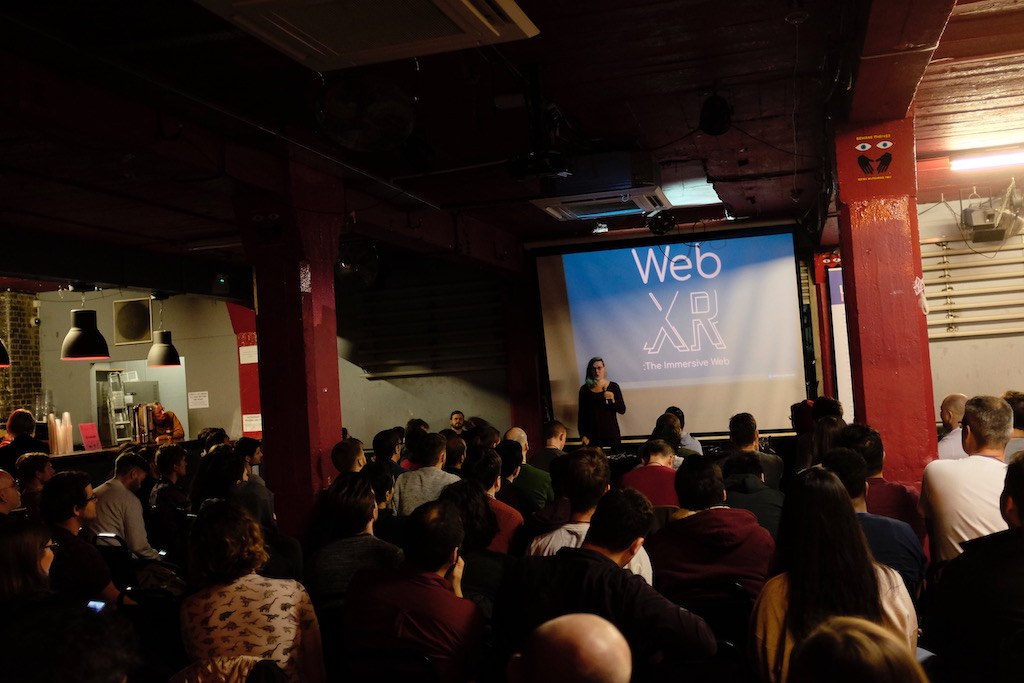
Ada Rose Cannon discussed the future of VR in the web. It was nice to see what's coming although it feels like it's still early days with the technology especially given the standards are still emerging. That said, it's the right time to start looking into the topic if you want to be amongst the first to adopt it. Also, it's a good chance to affect the development of technology by participating in the standards development.
Building Bots with JavaScript - Alex Lakatos#
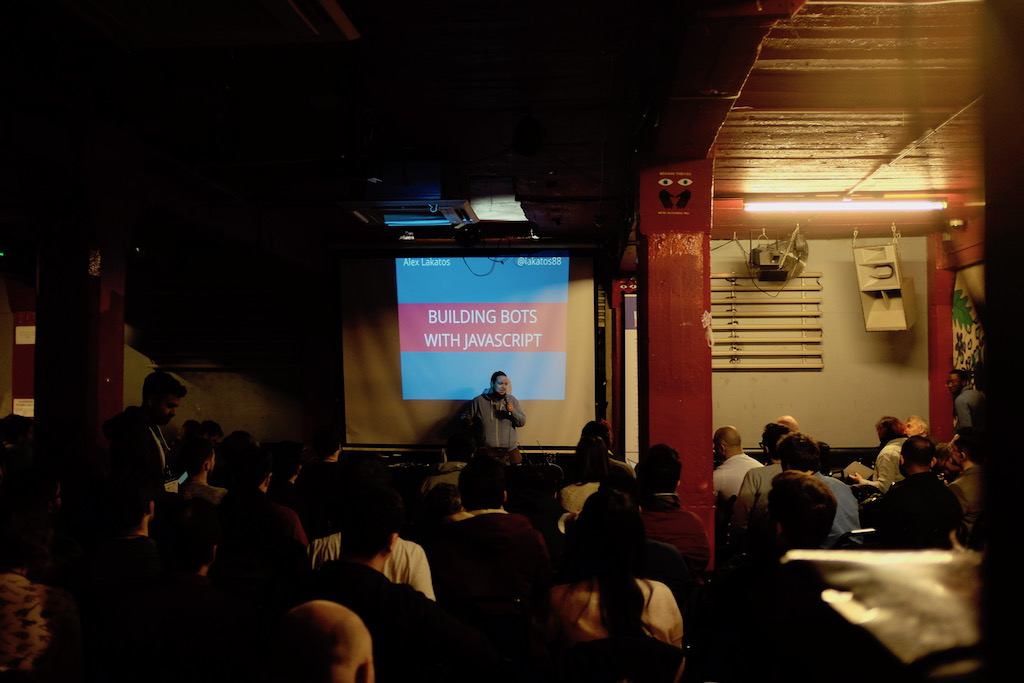
Alex Lakatos discussed the emergence of conversational user interfaces. The point was that a UI doesn't have to be static. Instead, we can code fundamental interactions to a bot that behaves in a human-like manner while remembering what we've told it before.
Doing this means we could tell a bot, for example, to book a flight to Berlin for the next Sunday as usual. Based on that it would propose a trip that fits our patterns of booking before and suggests scheduling it. I can see potential in this type of approach as it's also more accessible than the current options when done right.
Fast But Not Furious: Debugging User Interaction Performance Issues - Anna Migas#
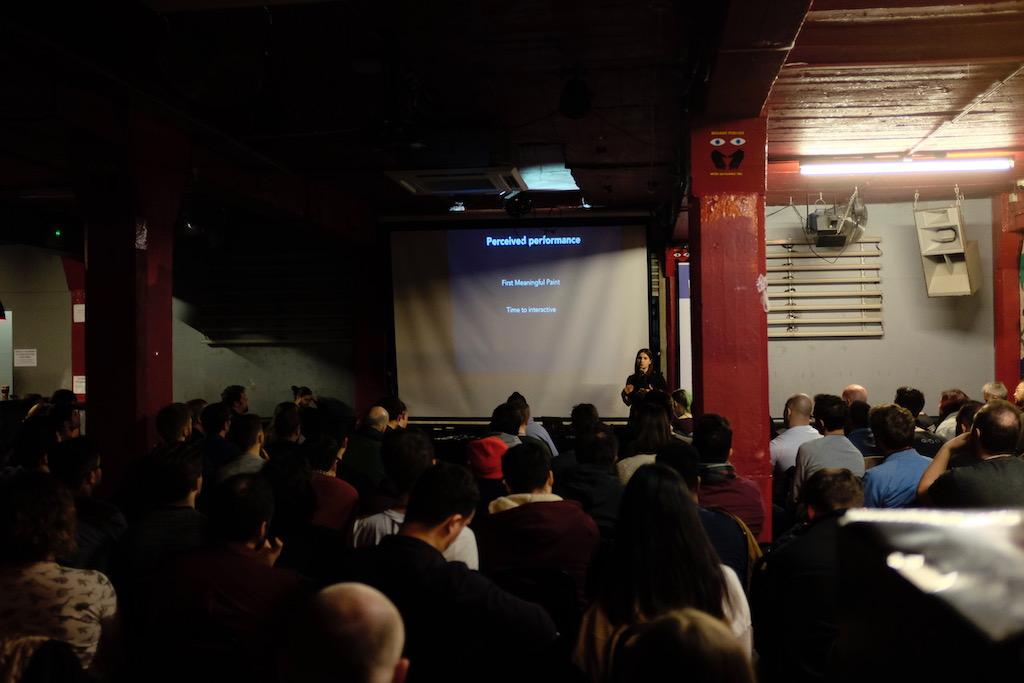
Anna Migas discussed how to approach user interface performance and to optimize it. The key learning for me was that there's still something for me to learn in-browser developer tools.
npm install disaster-waiting-to-happen - Liliana Kastilio#
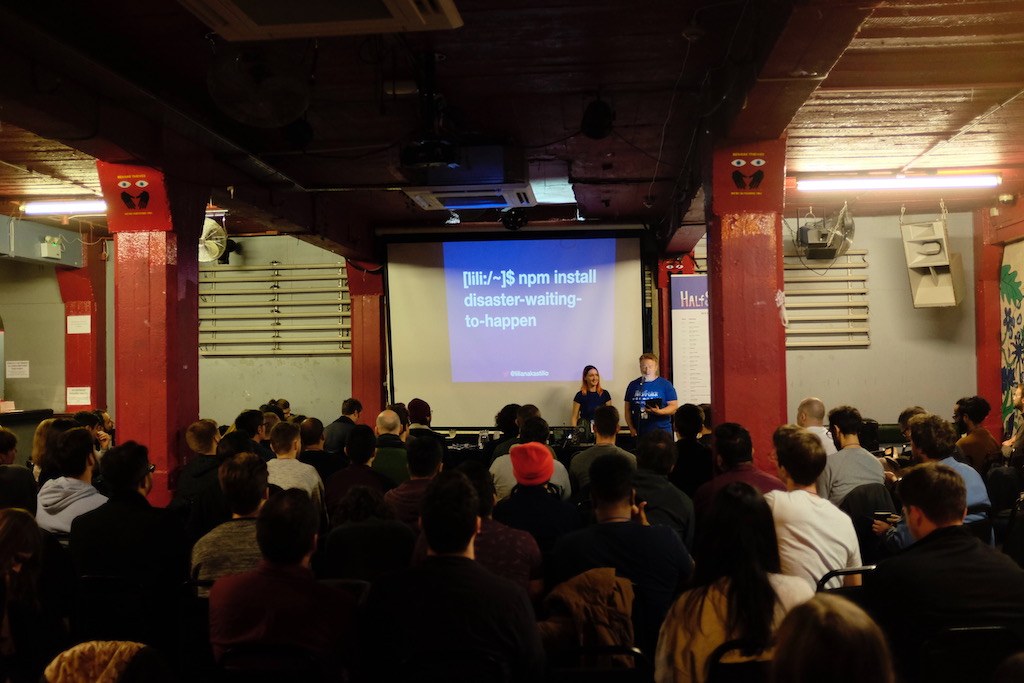
Liliana Kastilio discussed the recent security disasters that have happened in the IT sector. Security shouldn't be an afterthought. Instead, it's something to take into account continuously. As we bring packages to our projects, we also increase the possibility for a security breach.
It's in part an awareness issue but also tooling and a process level problem. It's tricky to solve as packages evolve unpredictably. At the same time, the amount of available packages keeps going up.
Enter ES2018 - Andrico Karoulla#
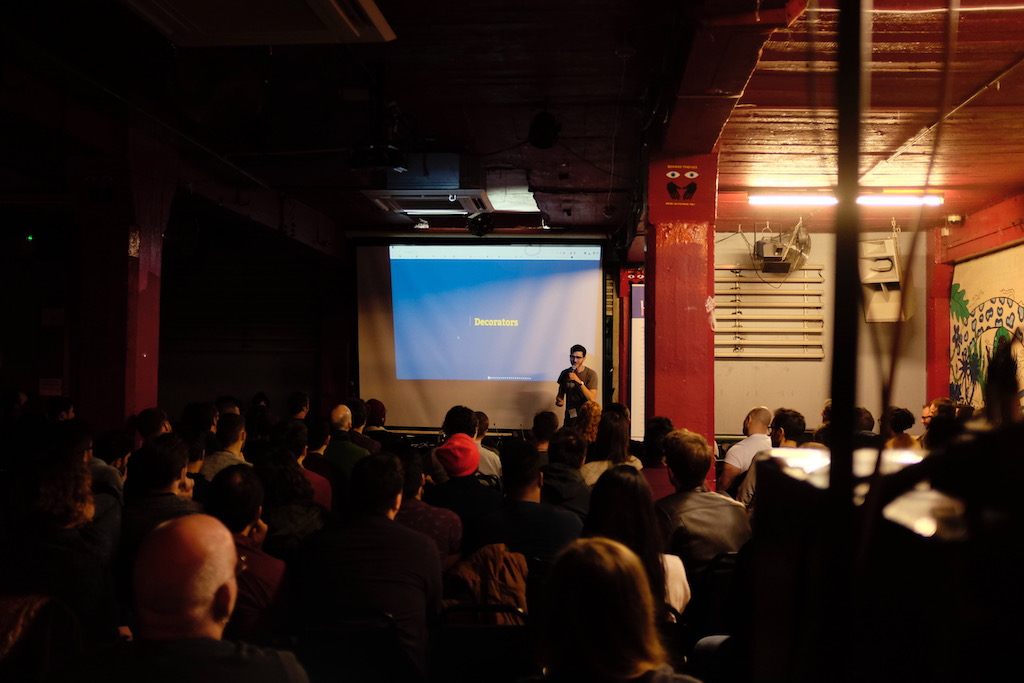
Andrico Karoulla focused on the new features available in ES2018. The key point I got out of the talk is that finally, we have a way to share memory across multiple processes. Earlier this has been a problem point when parallelizing execution and I am glad to see it has been resolved.
100% CSS Mario Kart - Stephen Cook#
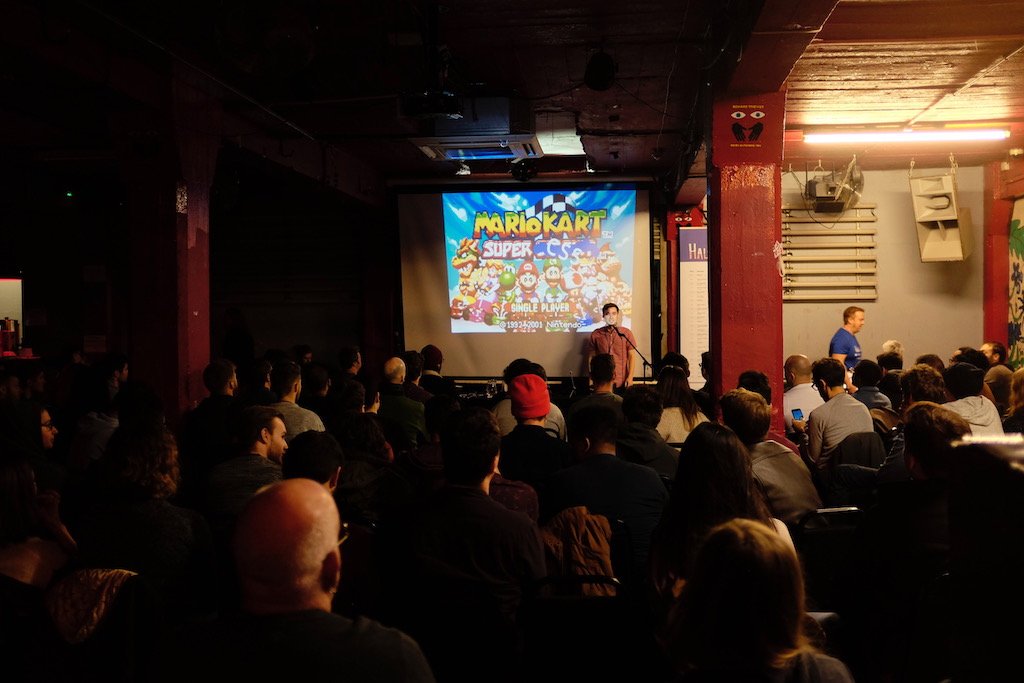
Stephen Cook's presentation gets my award for the most imaginative use of CSS. He implemented a subset of Mario Kart in using CSS and a tiny bit of JavaScript. He found a way to encode sprite textures within CSS definitions and then animate between them. Especially keyboard controls were smart as he was able to implement them with selectors crafted carefully.
CSS is starting to feel like a complete programming language to me. If you know what you are doing, you can do a lot with it.
Buying a House with JavaScript - Sean McGee#

Sean McGee discussed how he uses JavaScript to hunt for a house fitting his criteria. So far he hasn't been lucky, but it was intriguing to see how he combines multiple data sources to generate a visualization to show where possible candidates might exist. The nice thing is that he managed to automate so that if his criteria are met, he'll receive a text message telling him to purchase the property.
Home Automation with JavaScript - Jonathan Fielding#
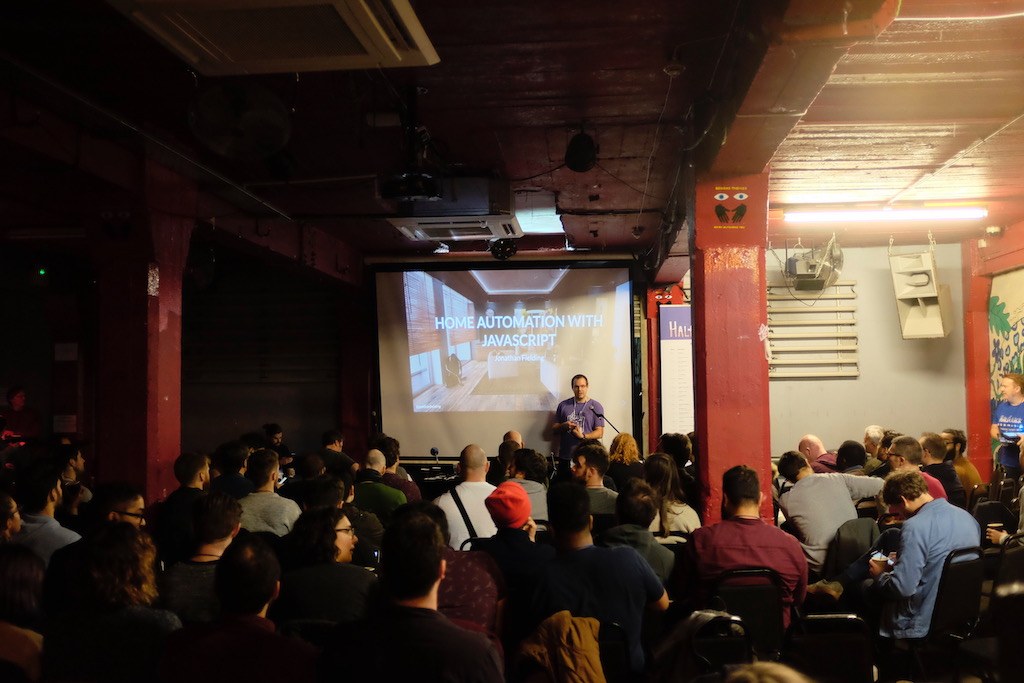
Jonathan Fielding focused on home automation and how to approach it with JavaScript. The field is currently fragmented, and usually, hardware doesn't work with all possible standards. The fragmentation makes it tricky to integrate multiple solutions although it seems to be possible if you are smart and can develop JavaScript APIs on top of proprietary UIs.
Reanimating the Web - Rob Bateman#
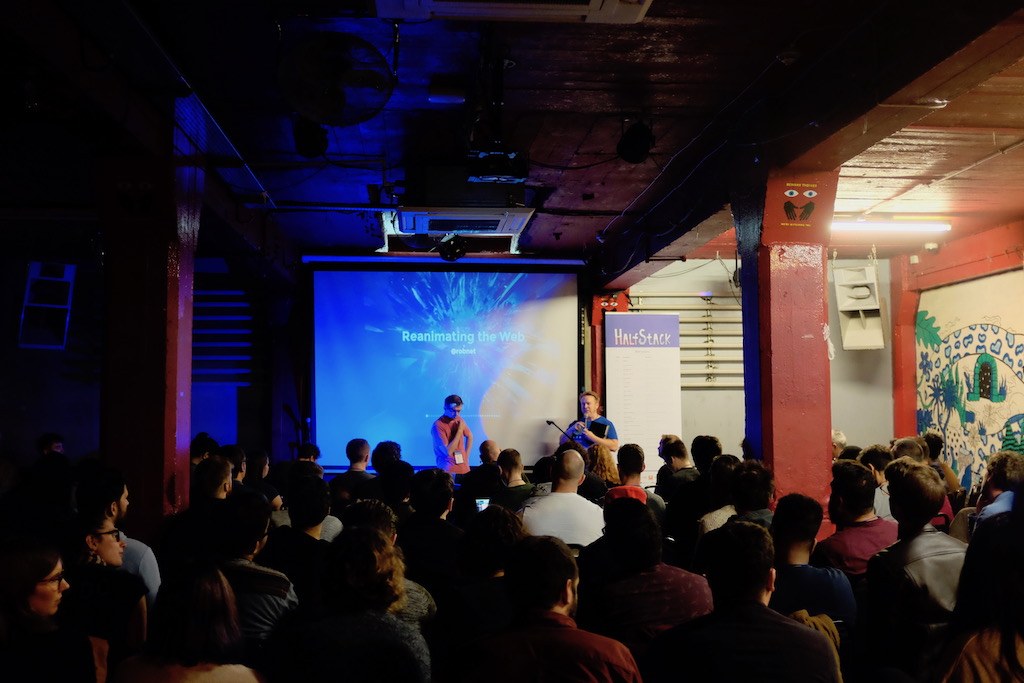
Rob Bateman discussed his transition from Flash to JavaScript. It was impressive to see the results. One of the outcomes his work is AwayJS, a 3D graphics framework.
The Most Important UI: You - Carolyn Stransky#
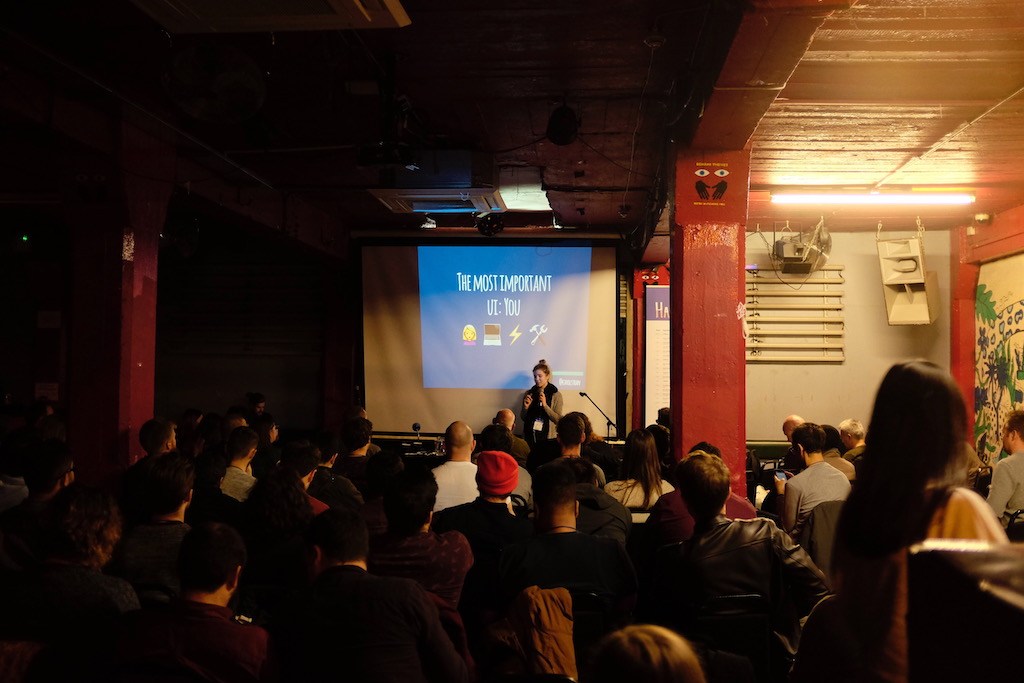
Carolyn Stransky focused on the crucial topic of self-care. It's too familiar in the industry for people to push too far and burn out. I felt the talk fit the conference well as it's a topic that requires awareness.
Cats vs. Dogs - Tom Dye, Dylan Schiemann#

Tom Dye and Dylan Schiemann gave a breather type presentation and figured out whether the audience prefers cats or dogs. There wasn't heavy content included, but the session had its place before more content.
JavaScript at the edge - Cameron Diver, Theodor Gherzan#
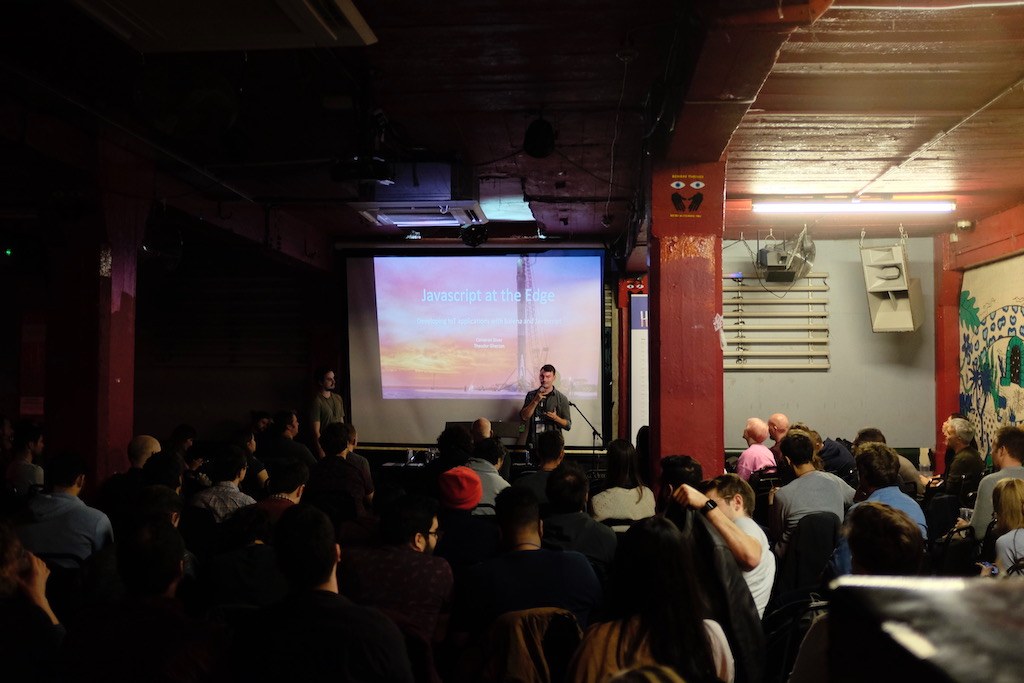
Cameron Diver and Theodor Gherzan discussed how to develop and deploy JavaScript on hardware. The talk included live demonstrations, and it was cool to see how it all went together as audio waveform was mapped to multiple LED displays.
This Talk Is About You - Jani Eväkallio#
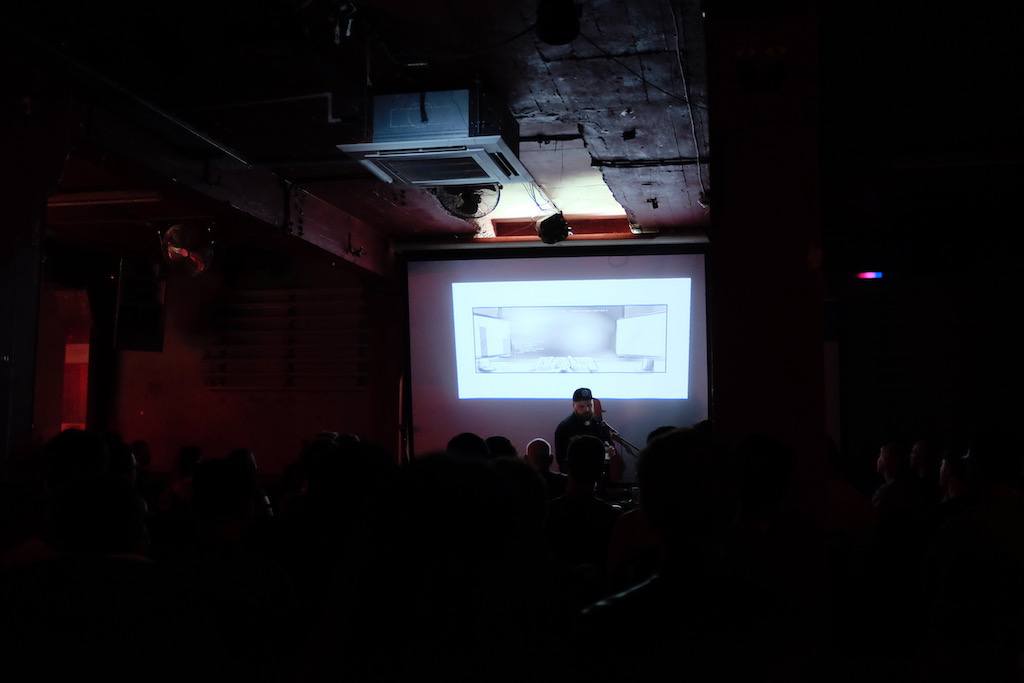
Jani Eväkallio's talk was about shifting perspective to why we are developing. Too often the focus of discussion is on technical details, and we can forget about why we are in the business in the first place. Individual decisions matter and through our personal choices we shape this world.
Beats, Rhymes & Unit Tests - Tony Edwards#
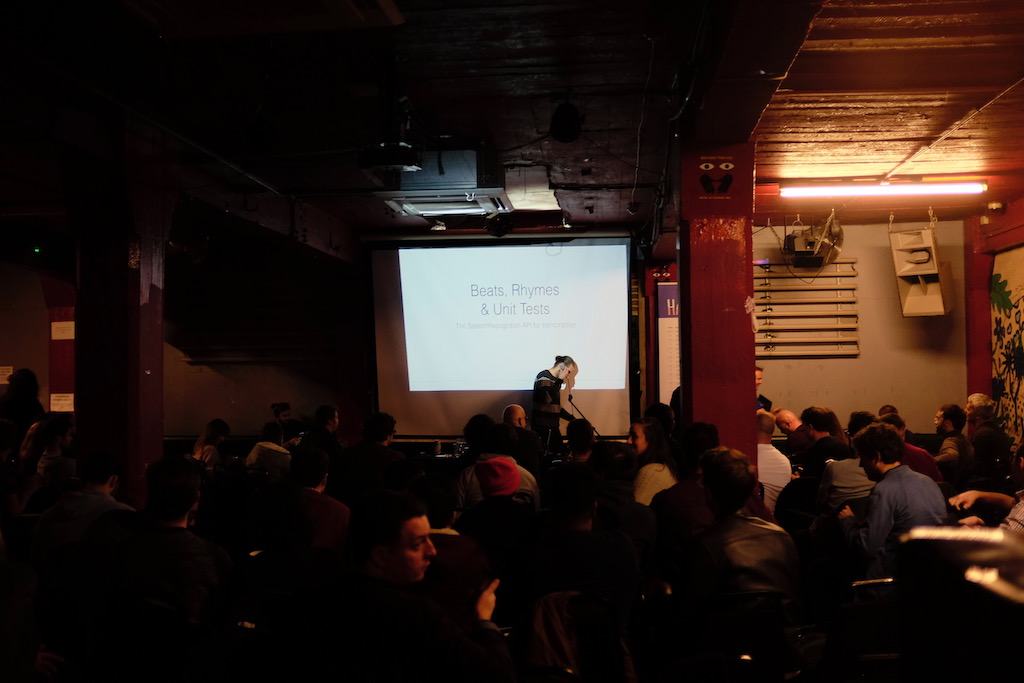
Tony Edwards' talk was perhaps the most entertaining one. He is an amateur rapper, and he wanted to see if it's possible to transcribe his rapping to a computer using JavaScript. He did this through a set of experiments, and finally, in the end, something was working. He also got the crowd involved which was great.
Alpha, Beta, Gamer: Dev Mode - Joe Hart#
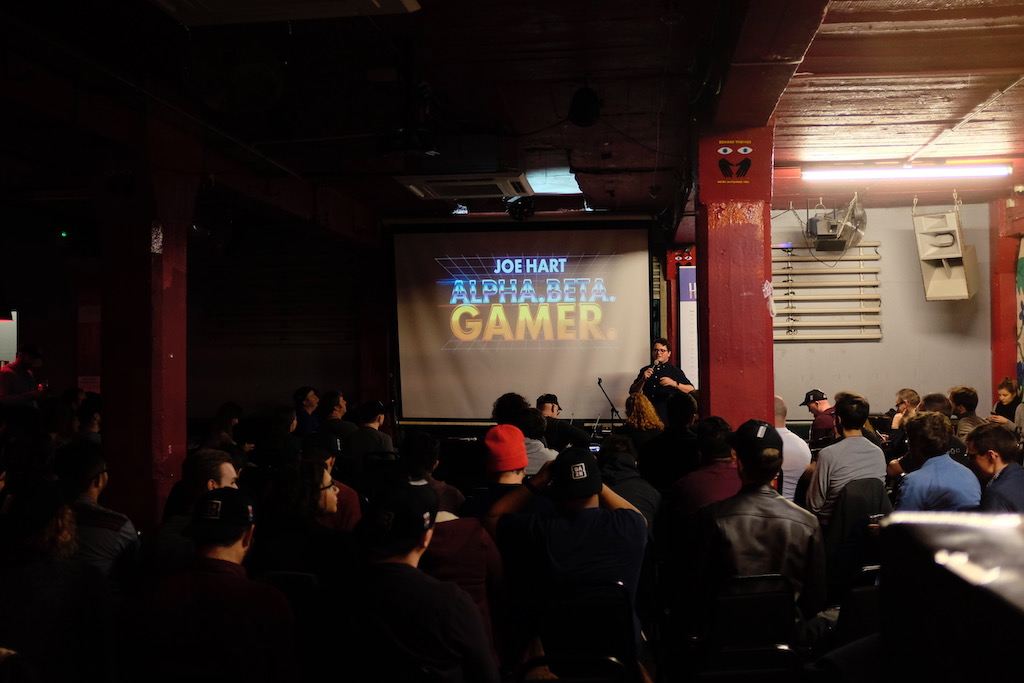
Joe Hart's presentation was another entertaining one. He discussed the history of games and had several live examples. We played Flappy Bird together and had great fun overall even if the last demonstration failed due to a coding issue.
Conclusion#
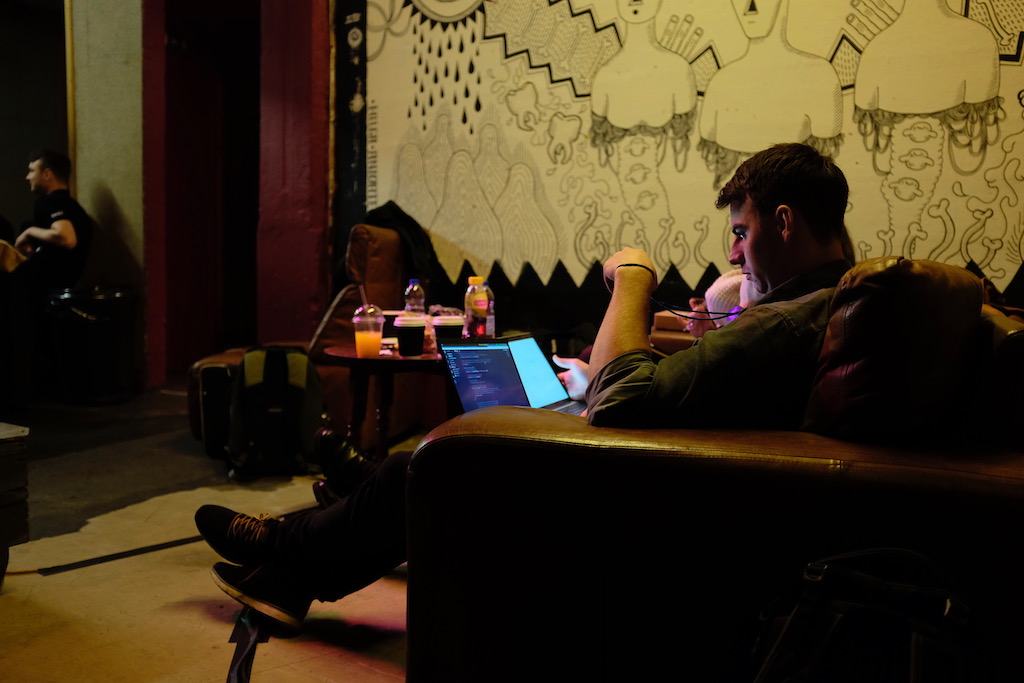
I like the concept of HalfStack. It's a small community conference that seems to have found its place. I feel it was a great showcase especially for the local community and it was amazing for me to be a part of it for a short while.
Find my photos of the event online.